Introduction
In my opinion, the weakest part of the Raspberry Pi is the use of an SD card on the board, and more specifically the way it sticks out by approx 1.5cm. Most of the cases (apart from the Cyntech case which now has a handy little cover) do not protect this most fragile part of the system. The reasons behind the choice of the SD card slot over a micro-SD card slot were a) manufacturing cost and b) the availability and cost of the cards themselves. For a mass-market product aimed primarily at education, this kept the cost of buying the Pi and media cards to the lowest possible.
I’ve personally found that even with an intact SD card slot, the connection between the card and the slot pins can be a bit a hit-and-miss. Having recently tried to demo the PiPodCorder at work and found that the SD card was slightly loose, I decided to buy another micro-SD card adapter having previously been so pleased with the pIO adapter from Quilix. This time, I decided that I wanted to see what Adafruit had to offer with their Low-profile microSD card adapter.
So, here is a review of both adapters and comparisons between their various merits.
Quilix pIO adapter (Rating: 9/10)
You can pick up this adapter from BitCrafts for approx £8 plus a small shopping charge. You can also order from ModMyPi for £7.50 and you can sometimes find them on eBay for slightly less (although you do have to be careful that you’re ordering the Quilix one not one of the clones).
Let’s have a look at the adapter:

With this adapter you load the card in from the side using a push-in, push-out action. This means it doesn’t stick out from the circuit board at all. When inserted into the Pi, the circuit board itself protrudes a maximum of half a millimetre. In terms of depth, the circuit board itself sits flush in the SD slot and is barely deeper than the microSD card itself. It really does have a wonderfully small footprint. Here are some photos of the adapter in use:
Adafruit low-profile adapter (Rating: 6/10)
You can get this adapter for £5.99 from Phenoptix or elsewhere for around the same price.

This adapter is loaded from the outer edge, i.e. towards the Pi and is push-in, push-out. The microSD card sticks out of the long edge a good 1-2mm, roughly the same size as the raised notch on the card. This allows easier access than the Quilix one, but unfortunately means more of an overhang and it is more susceptible to accidentally springing the card out of the slot. The adapter board itself sticks out another 1mm from the end of the Pi. The depth of the card is virtually identical to the Quilix adapter. It definitely has a larger footprint than the Quilix, which, along with the overhang of the card itsel does give some difficulties with cases. It’s fine in the Adafruit case (unsurprisingly) and the ModMyPi case. However, it’s not possible to close either the Cyntech case or the SB case properly when using this adapter. Here are some shots showing the adapter in use:
In conclusion
Both adapters offer much greater protection for your operating system media than using a standard SD card. There are two main differences between the adapters: accessibility & size. If you need an adapter that will primarily allow easy swapping of the microSD card, the Adafruit is probably the better option, although the Quilix is easy too. Size-wise, the Quilix wins outright due to the high level of compatibility with the four cases I have. I should say I do not own a Pibow case but have read accounts that the Quilix adapter does fit (depending on tolerances in the Pibow sheets) but the Adafruit adapter does not fit.
The slightly higher price for the Quilix adapter is definitely worth it, in my opinion, and I wholeheartedly recommend getting one for your Pi and switching to microSD cards.

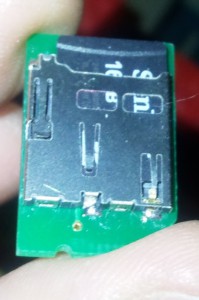
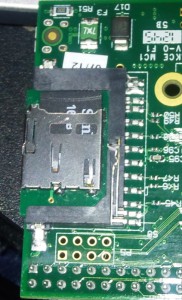
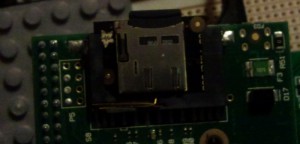
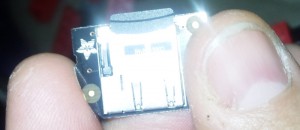
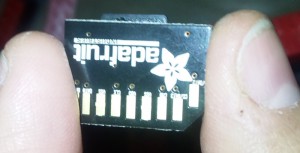
[…] recantha Introduction In my opinion, the weakest part of the Raspberry Pi is the use of an SD card on the […]
They are definitely a great invention.
The only issue I’ve had was because the adapter plus a micro SD card is roughly twice as thick as an SD card on its own. This can be a problem with some cases.
Yes – I spent ages trying both adapters with all 4 of the cases I’ve got. I would’ve tried it with a Pibow myself but I don’t fancy paying _that_ much for a few bits of plastic :p
The Quilix pIO adapter seems a much better solution in my view, if you are going to the trouble of using this type of adapter then you may as well have one that doesn’t protrude from the PCB at all. The Adafruit one does a bit. Its just a shame the postage costs are so high for the Quilix pIO adapter. Great review thanks.
UPDATE: I have just found the Quilix pIO adapter on Etsy.com and postage is only £1.79. from a seller called Bitcrafts, they have some really cool wooden cases with interchangeable tops.
Oh, fab. That’s pretty good on postage – could you share a link to it and I’ll add it to the blog post?
sure its: http://www.etsy.com/shop/bitcrafts?ref=search_shop_redirect it doesnt work well if you want more than one, because it adds £1.79 per item. I have emailed him about it.
I have received a reply and he says it a quirk of Etsy, so I ordered via email and PayPal. He will ship as many as you like for €2.
On another topic, have you looked at the performance difference between different SD and Micro SD cards. I’ve used Class 4 cards up to now but just switched to Class 10 cards. Using Raspbarian (a normal desktop) it seems to be quicker. Now I notice they do an Sandisk 8GB Extreme Pro UHS-1 Micro SD (SDHC) card, this has a read write rate of 95MB/S which is much faster than anything I’ve seen before.
I don’t know how to test this, do you? and am i just imagining things when I think they go faster 🙂
I don’t know how to test it, no – try asking on the Foundation forums as I know there are a lot of people using the class 10 cards. Originally, it was recommended to only use class 4s, but I guess people just had the class 10s sitting around and found they worked. Empirical evidence certainly says that class 10s produce significant benefits, so no I don’t think you’re imagining it 😉
There’s been a lot of work on the OS “firmware” to make it more compatible with faster cards.
Mike is it possible to change the SD card “in situ” on the Qilix one or do you have to take the whole adaptor out to change the card?
I *think* you can swap it out without removing it – it’s just a bit fiddly, but I remember doing it. Will try and remember to check tonight when I’m home again.
Will this affect the Read/write speed of the card?
In general there doesn’t appear to be any difference between equivalent microSD and normal SD cards of the same type and class etc.
I haven’t noticed any difference either.
[…] knock it or drop it, just like all the other cases I’ve reviewed. I decided to try out the two microSD card adapters I have to see if the case would accommodate them. The Adafruit adapter was, again, too big for the […]
i think it affect speed i installed xbian and boot time take alot before this slot